我想使用plotly,具体来说是ploty express,来创建一些可视化图表。
我正在制作的其中之一是散点图
我有一些代码如下,可以生成一个漂亮的散点图:
import plotly.graph_objs as go, pandas as pd, plotly.express as px
df = pd.read_csv('iris.csv')
fig = px.scatter(df, x='sepal_length', y='sepal_width',
color='species', marker_colorscale=px.colors.sequential.Viridis)
fig.show()
然而,我想尝试改变配色方案,即为每个物种呈现的颜色。
我阅读了:
- https://plotly.com/python/builtin-colorscales/
- https://plotly.com/python/colorscales/
- https://plotly.com/python/v3/colorscales/
但无法更改颜色。
尝试中:
fig = px.scatter(df, x='sepal_length', y='sepal_width',
color='species', marker_colorscale=px.colors.sequential.Viridis)
---------------------------------------------------------------------------
TypeError Traceback (most recent call last)
<ipython-input-6-78a9d58dce23> in <module>
2 # https://plotly.com/python/line-and-scatter/
3 fig = px.scatter(df, x='sepal_length', y='sepal_width',
----> 4 color='species', marker_colorscale=px.colors.sequential.Viridis)
5 fig.show()
TypeError: scatter() got an unexpected keyword argument 'marker_colorscale'
尝试中
fig = px.scatter(df, x='sepal_length', y='sepal_width',
color='species', continuous_colorscale=px.colors.sequential.Viridis)
---------------------------------------------------------------------------
TypeError Traceback (most recent call last)
<ipython-input-6-78a9d58dce23> in <module>
2 # https://plotly.com/python/line-and-scatter/
3 fig = px.scatter(df, x='sepal_length', y='sepal_width',
----> 4 color='species', continuous_colorscale=px.colors.sequential.Viridis)
5 fig.show()
TypeError: scatter() got an unexpected keyword argument 'continuous_colorscale'
我该如何在 plotly 可视化中更改使用的颜色?
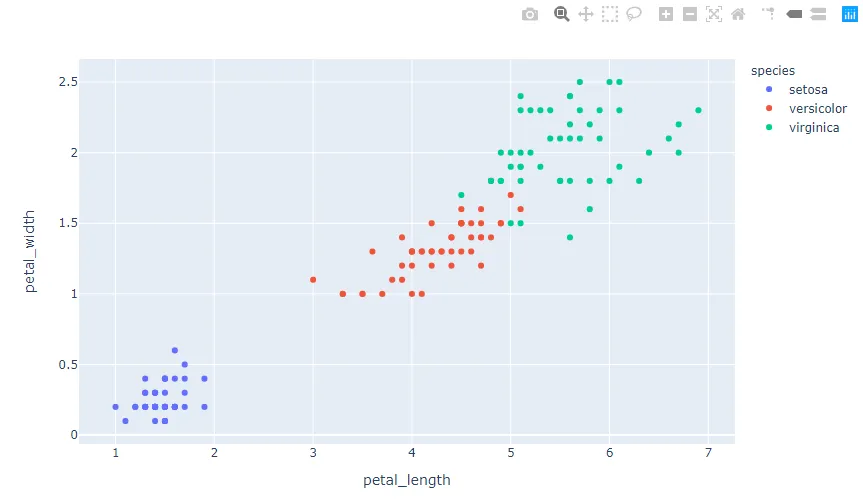
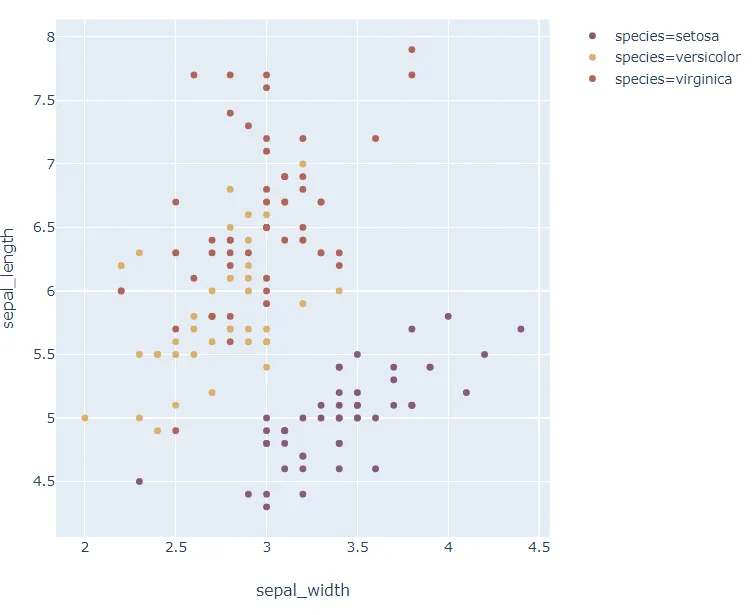
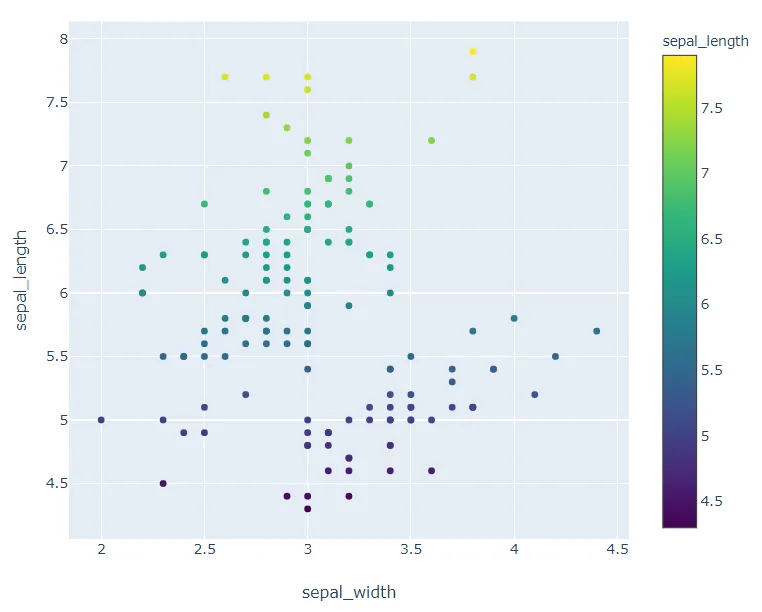
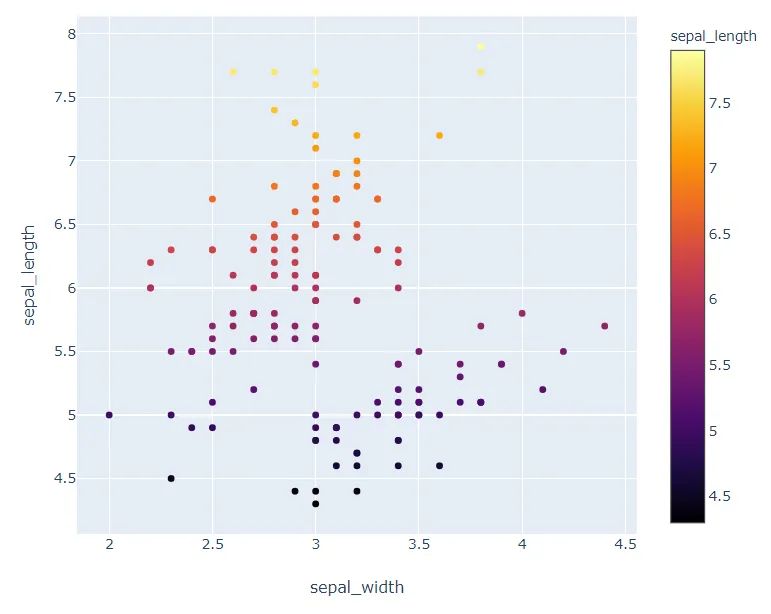
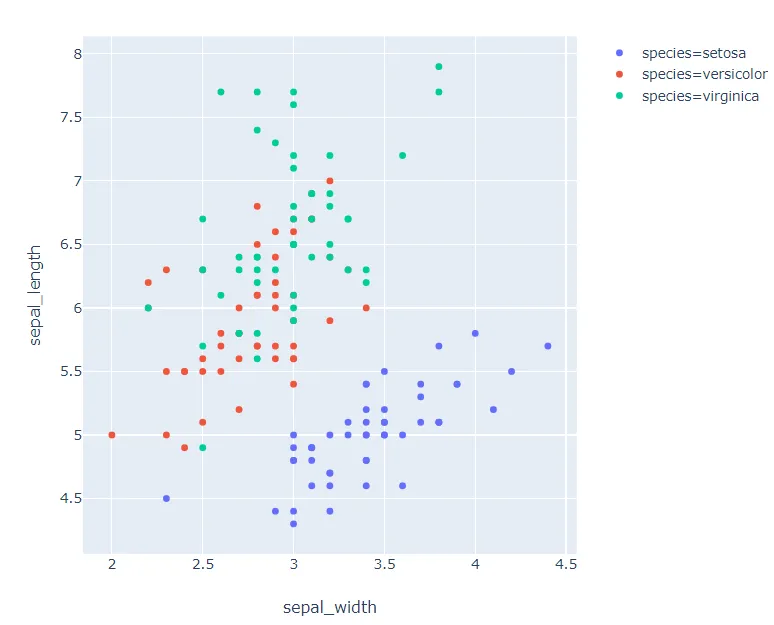
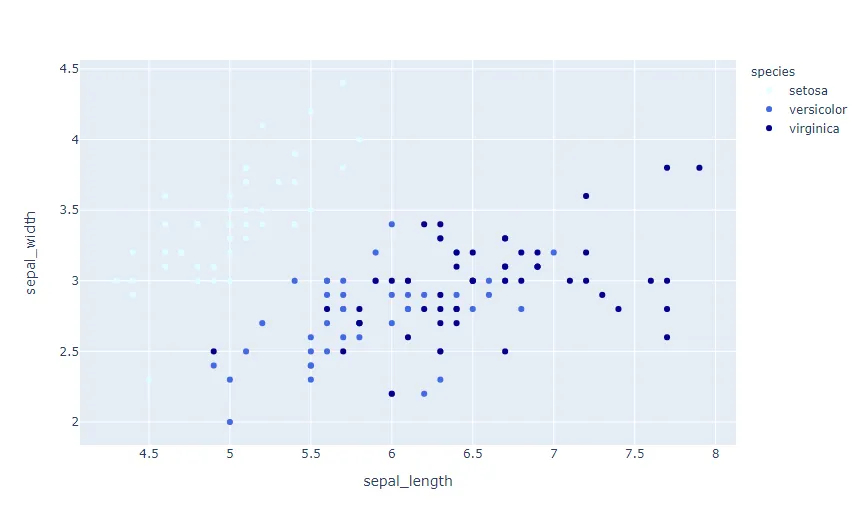
color_discrete_sequence的值而非直接在图表初始化 API 中指定,该如何实现呢? - matanster